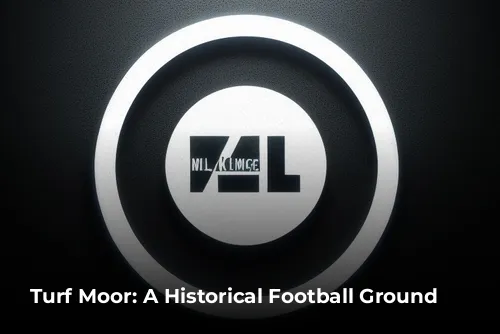Turf Moor, the home of Burnley Football Club, boasts a rich history dating back to 1833 when the land was used as a cricket ground. Today, the stadium, with a capacity of 21,940, is a far cry from its humble beginnings with only a single stand.

Burnley’s Home Ground: A Journey Through Time
Burnley FC first moved to Turf Moor in 1883, invited by Burnley Cricket Club, who had been using the site for over 50 years. In their early years, known as Burnley Rovers Football Club, the team played their matches at Calder Vale Ground. With the exception of their Lancashire rivals, Preston North End, who have occupied their stadium, Deepdale, for a longer duration, Burnley holds the record for the longest uninterrupted stay in one stadium in England.
Over the years, Turf Moor has undergone significant transformations. The first grandstand, with a capacity of 800, was built in 1885. After World War II, the stadium began to resemble a typical British ground, featuring four distinct stands. One of the most memorable additions was the “Longside” stand built in 1954, which housed both home and away fans. Interestingly, it was constructed by members of Burnley’s youth team, a feat unimaginable today!
Following the release of the Taylor Report in 1990, Burnley was compelled to demolish their terrace sections and convert the stadium into an all-seater venue by September 1996. This major renovation cost an estimated £5.3 million, adjusted for today’s prices. While the club lost a considerable amount of sentimental value with the removal of the historic Bee Hole End and Longside stands, they have adapted well to the modern era and have even secured promotion to the Premier League twice. This impressive feat is remarkable considering the club’s relatively small size compared to its rivals.
A Look at the Away Fans’ Stand
Away supporters visiting Turf Moor are accommodated in the David Fishwick Stand, located on the Western side of the pitch, behind the goal. The standard allocation of 3,931 seats doesn’t completely fill the stand, which is reserved exclusively for visiting fans. However, for high-profile matches like Premier League and FA Cup games, the number of tickets released can increase. The positioning of the away fans depends on the anticipated attendance, with the club sometimes choosing to place them in the corner sections instead of the middle. This is likely to mitigate the visual impact of the two large support beams holding up the roof, although seats beyond the first few rows might have somewhat obstructed views.
The David Fishwick Stand, being one of the older structures in the stadium, used to have a poor reputation, especially concerning the toilets and the overall cleanliness of the concourse. However, recent refurbishments have significantly improved the facilities, with many fans hoping for a similar upgrade to the wooden seats in the stand.
Exploring the Pubs and Eateries Around Turf Moor
Turf Moor is conveniently located within walking distance of Burnley Central, offering a good selection of pubs and eateries for fans of both teams. While there are few “home supporters only” pubs in the area, the nearby Burnley Cricket Club welcomes home and away fans, even those clad in their team colors. This pub is popular for its affordable prices, decent atmosphere, and onsite parking.
North of the ground, about 10 minutes away on Belvedere Road, is The Queen Victoria, a large Brewers Fayre outlet that welcomes away fans. This family-friendly chain offers a spacious bar and a familiar ambiance for those who have visited other Brewers Fayre establishments. For those who prefer real ale, it’s best to arrive in Burnley a bit early and head to The Bridge Bier Huis, a Dutch-style “Beer House” in the town center. Listed in the CAMRA beer guide, this establishment offers up to six cask-conditioned ales at any given time. Combined with a visit to the nearby “Boot Inn,” you will have plenty of options for enjoying a pint.



